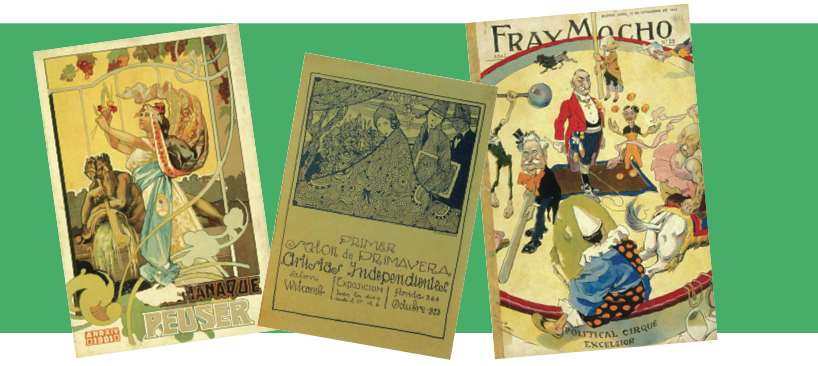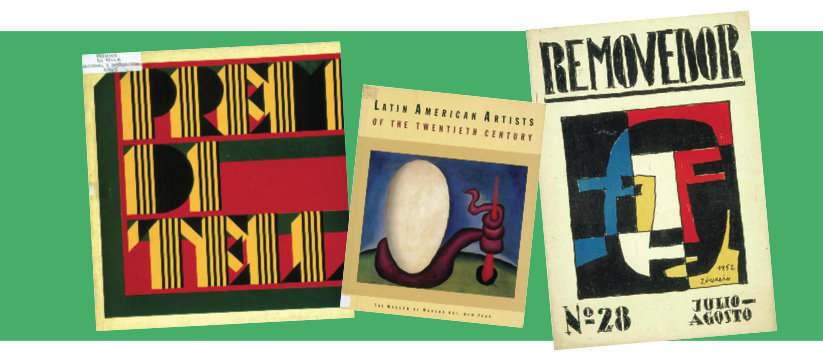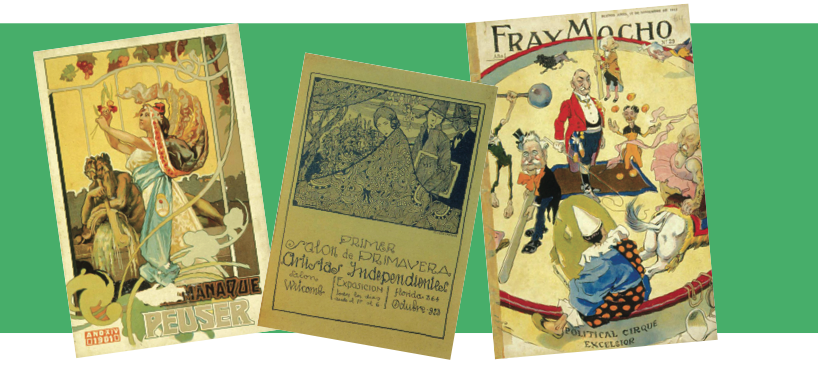FUNDACIÓN ESPIGAS A Contribution to the Argentine Cultural Patrimony
A Documentation Center for the History of Argentine Visual Arts and a Model for Latin America
In 1992, under the slogan Conserving documentation is taking care of our history, collector and businessman Mauro Herlitzka and art researcher, curator and critic Marcelo Pacheco decided to undertake the retrieval and systematization of all kinds of documentation referred to the history of the visual arts in Argentina. In 1993, they created the Espigas Foundation and its Center for the Documentation of the History of the Visual Arts in Argentina.

As Marcelo Pacheco has affirmed, “Since its inception, Fundación Espigas has based its activities on a model of integration with the already existing institutions and organizations, both public and private, working on the notion of networking as a definition of its profile and construction strategy...It joined in the task of compiling and recording past and present archives1, building a road oriented outward, in the direction of society.
In this framework, Fundación Espigas, a private, non-profit institution, adopted as its mission the recovery, preservation and dissemination of documentary material related to Argentine and Latin American art, and international art associated with Argentina, contributing to the professionalization of the artistic milieu.
After being active for fourteen years, and in constant growth through the contributions of individuals, business firms and cultural institutions, in addition to the acquisitions carried out, the Documentation Center of Fundación Espigas has succeeded in gathering together a cultural patrimony comprising more than 200,000 documents, which include books, monographs, catalogues for exhibitions, auction sales, biennials, salons, and competitions, photographs, videos, press releases, cultural agendas, serial publications, calendars, and institutional newsletters, manuscripts, collections of letters and posters, which allows us to refer to it as the largest documentation center on visual arts in Argentina, and one of the most important ones in Latin America.
Evidence of this is its participation, representing Argentina, in the Documents of 20th Century Latin American and Latino Art. A Digital Archive and Publications Project at the Museum of Fine Arts, Houston, organized by The International Center for the Arts of the Americas at the Museum of Fine Arts, Houston, which also included the participation of institutions from Brazil, Colombia, Chile, U.S.A., Mexico, Peru, Puerto Rico and Venezuela.
Mention must also be made of important grants awarded by The Getty Foundation, of Los Angeles (USA), and the Mellon Foundation of New York (USA), which made it possible to digitalize the documentation and make available to the public at large, free of charge, the Espigas Database, a unique tool for carrying out speedy documentary and bibliographical searches, localizations and consultations combining multiple descriptions. Consultations may be made via the Internet at www.espigas.org.ar
As a result of the technological progress experienced in recent years, the Foundation was able to microfilm valuable documents and digitalize its photography archives. International organizations, national and international companies and cultural institutions collaborated and participated in these programs: Telefónica Foundation and the Argentine National Endowment for the Arts; institutions representing France, Switzerland, The Netherlands, Spain, Italy, and Harvard University (USA), contributed unconditional support for the achievement of the goals proposed.
Another line of action representing a possible path for the public to access art history was the launching of the Editorial Program. Resorting to its documentary and bibliographical assets, Fundación Espigas has published Witcomb: Memories of an Art Gallery; Art and Document – Fundación Espigas 1993-2003; Projects on the discourse on myself; Julio Rinaldini. Extemporaneous Criticism; French Art in Argentina 1890-1950; Atalaya. To act based on art; Flemish and Dutch Art in Argentina; Spanish Art in Argentina.1890-1860; Ruth Benzacar; Masters and Disciples. Argentine Art from the A. Canale Archive; Julio Rinaldini. Writings on Art, Culture and Politics and Avant-garde Writings. Argentine Art of the Sixties (Published jointly with Fundación Proa of Argentina and the Museum of Modern Art of New York)
Fulfilled goals, projects and programs successfully completed and carried out throughout fourteen years of work entailed recognition and support from national and international firms and institutions: The Andrew W. Mellon Foundation (USA), Swiss Federal Office of Culture (Switzerland), Spanish Agency for International Cooperation, AECI (Spain), Sotheby’s (Argentina), Christie ́s (USA), National Endowment for the Arts, FNA (Argentina), The J. Paul Getty Grant Program (USA), Co-operation and Cultural Action Department (SCAC) of the French Embassy (France), The Harvard University (USA), Schiting Cultuur Iventarisatie (The Netherlands), Andreani Foundation (Argentina), Impsat Communications (Argentina), Telefónica Foundation (Argentina), The Museum of Fine Arts, Houston (USA), Bunge y Born Foundation (Argentina).
At a time when globalization tends to dissolve cultural frontiers and nuances, Fundación Espigas ́s aim is to contribute to preserve our cultural identity.
Until the creation of the Documentation Center of Fundación Espigas, part of the documentation on the history of Argentine art was destroyed or remained scattered and was hard to access. Today, Fundación Espigas is the most important and modern repository on the subject.





